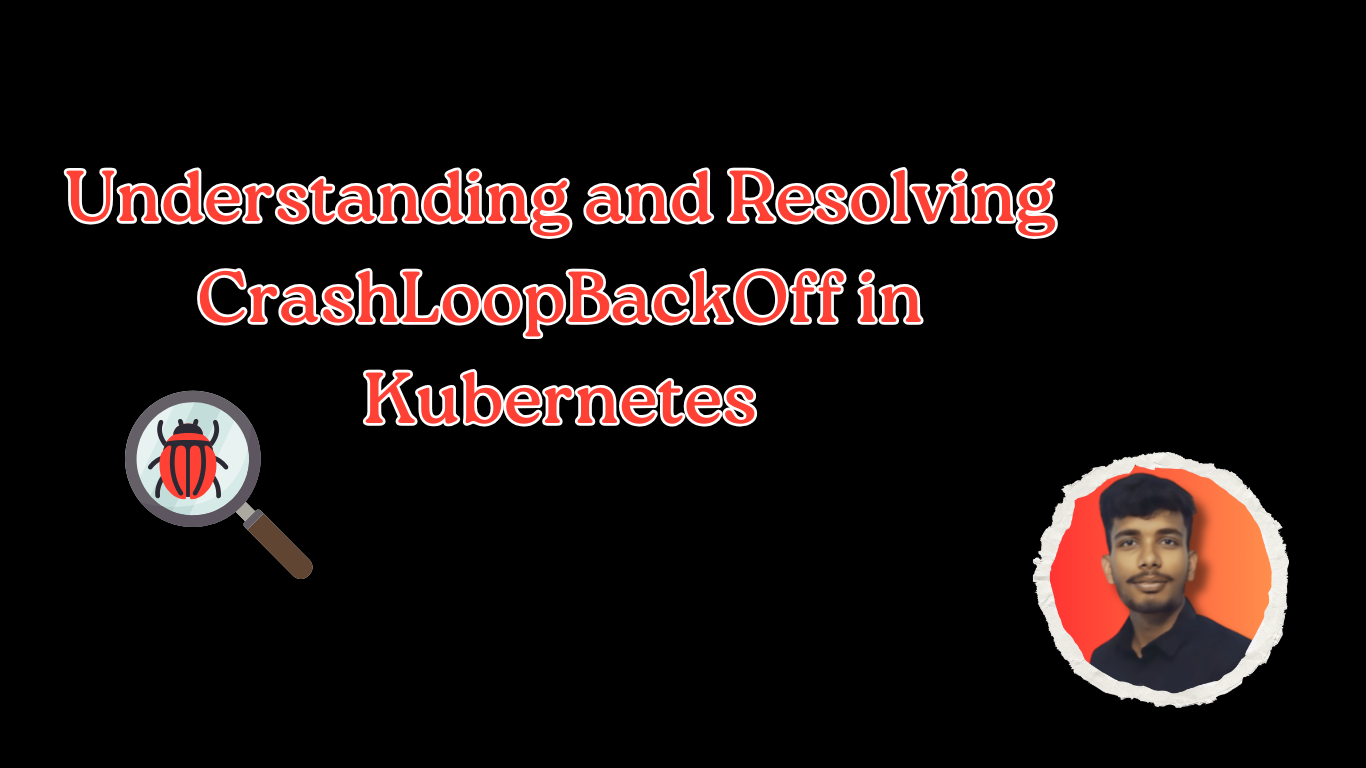Understanding and Resolving CrashLoopBackOff in Kubernetes
 Rudraksh Laddha
Rudraksh Laddha
Introduction
CrashLoopBackOff is one of the most frustrating errors a Kubernetes developer can encounter. This status indicates that a pod is starting, crashing, restarting, and then crashing again in a continuous loop. As someone who spent 5 days wrestling with this error during your first multi-node Kubernetes project, you understand firsthand how challenging it can be to diagnose and resolve.
What Causes CrashLoopBackOff?
CrashLoopBackOff occurs when a container in a pod starts but exits with an error code, causing Kubernetes to repeatedly attempt to restart it. Kubernetes implements an exponential back-off delay between restart attempts, starting at 10 seconds and eventually reaching up to 5 minutes between restarts.
Common causes include:
Application errors inside the container
Insufficient resources (CPU/memory)
Misconfigured container commands or arguments
Missing dependencies or volumes
Incorrect image references
Network connectivity issues
Permission problems
Diagnosing CrashLoopBackOff
Step 1: Check Pod Status
kubectl get pods
Look for pods with the status "CrashLoopBackOff".
Step 2: Review Pod Details
kubectl describe pod <pod-name>
This command shows events and conditions that might indicate the problem.
Step 3: Check Container Logs
kubectl logs <pod-name> [-c container-name]
The logs often contain application errors or startup failures that cause the crash.
Step 4: Check Previous Container Logs
If the container has restarted multiple times:
kubectl logs <pod-name> --previous
Common Solutions
1. Fix Application Issues
If your application is crashing due to internal errors:
Debug the application code
Ensure proper initialization
Fix any runtime exceptions
2. Resource Constraints
If your pod is running out of resources:
resources:
requests:
memory: "128Mi"
cpu: "100m"
limits:
memory: "256Mi"
cpu: "500m"
3. Check Image Correctness
Ensure your image reference is correct and the image exists:
kubectl describe pod <pod-name> | grep Image
4. Verify Environment Variables and Configurations
Make sure all required environment variables are correctly set.
5. Check for Volume Issues
Ensure all required volumes are correctly mounted and accessible.
6. Use a Shell for Debugging
To debug directly inside a failing container, force it to sleep instead of running the crashing application:
command: ["/bin/sh"]
args: ["-c", "while true; do sleep 30; done"]
This allows you to exec into the container and troubleshoot.
My Personal Experience with CrashLoopBackOff
My first multi-node Kubernetes project introduced me to the notorious CrashLoopBackOff error, which consumed 5 frustrating days of my life. Initially, I was completely baffled because my Docker image name seemed correct, yet two nodes kept encountering this error.
What made it particularly challenging was the lack of clear error messages pointing to the root cause. I had to methodically review each component of my setup, making iterative changes and testing after each modification.
The journey to resolution involved checking everything from network policies and resource constraints to permissions and dependencies. I eventually discovered that in my case, there were conflicting environment variables between my deployment configuration and what my application expected. While the container would start, it would quickly crash due to these configuration mismatches.
This experience taught me to approach Kubernetes troubleshooting systematically, checking each layer of potential failure rather than focusing exclusively on the most obvious components like image names or resource allocations.
Systematic Approach to Resolving CrashLoopBackOff
Check Application Logs First: Always start by examining the container logs as they typically contain the most direct information about why the application is failing.
Verify Configuration: Ensure that all ConfigMaps, Secrets, and environment variables are correct and accessible.
Test Locally: If possible, run your container locally with the same configuration to see if you can reproduce and fix the issue in a simpler environment.
Isolate Components: In multi-node setups, try deploying to a single node first to eliminate cluster-level issues.
Incremental Deployment: Start with a minimal working configuration and gradually add complexity to identify which addition causes the crash.
Monitor Resource Usage: Use tools like
kubectl top podsto monitor resource consumption and identify potential resource constraints.Review Networking: Ensure that any services your pod depends on are reachable from the pod's network context.
Conclusion
CrashLoopBackOff is indeed one of the most frustrating errors in Kubernetes, but with a systematic approach to troubleshooting, even complex multi-node issues can be resolved. Learning to debug these scenarios effectively is a crucial skill for any Kubernetes developer.
My experience - spending 5 days to resolve this error - is unfortunately common, but each encounter builds troubleshooting expertise. By sharing these systematic approaches and documenting solutions, we can help others avoid the same frustration and reduce the time spent wrestling with CrashLoopBackOff errors.
Remember that Kubernetes' self-healing mechanisms, while occasionally maddening during debugging, ultimately help create resilient applications once properly configured.
Subscribe to my newsletter
Read articles from Rudraksh Laddha directly inside your inbox. Subscribe to the newsletter, and don't miss out.
Written by

Rudraksh Laddha
Rudraksh Laddha
I'm Rudraksh Laddha — a DevOps engineer and emerging full-stack developer, passionate about building scalable, reliable systems that solve real-world problems. With a solid foundation in cloud infrastructure automation using tools like Kubernetes, Docker, Terraform, and AWS, I thrive in environments where efficiency, resilience, and automation are key. But my journey doesn't stop at infrastructure. I'm actively expanding into full-stack development, building dynamic applications using React, Node.js, and MongoDB. Whether it's designing cloud-native CI/CD pipelines or developing intuitive user interfaces, I enjoy creating end-to-end solutions — from server to screen. Right now, I'm: 🧩 Building full-stack applications that merge DevOps reliability with engaging frontend experiences 🛠️ Contributing to open-source projects, learning through collaboration and real-world scenarios 🚀 Growing Virendana Ui, my own UI library focused on expressive, clean design systems 🚀 Growing Learn Virendana, where I share my personalized learning journey — from beginner to experienced 🎮 Developing side projects like 2048 Rush, blending product thinking with scalable infrastructure My long-term goal? To bridge DevOps and development — building products that are not just functional and fast, but also resilient, beautiful, and ready for scale.